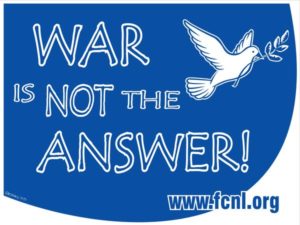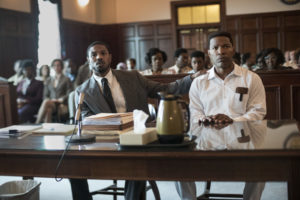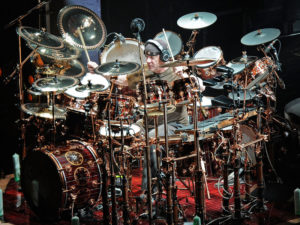Friends Committee on National Legislation
January 11, 2020‘In dangerous times like these we have to produce generations of dedicated, courageous, and creative contemplative activists who will join [the conscious collective] to bring radical healing and change to this damaged world, before it’s too late.’ -Fr. Richard Rohr
We are Quakers and friends changing public policy.
War: Bloodthirsty Arrogance
Rescue teams on January 8, 2020 at the scene of a Ukrainian airliner that crashed shortly after take-off near Imam Khomeini airport in the Iranian capital Tehran.
“The solitary is, first of all, one who renounces arbitrary social imagery. When his nation wins a war or sends a rocket to the moon, he can get along without feeing as if he personally had won the war or hit the moon with ar rocket. When his nation is rich and arrogant, he does not feel that he himself is more fortunate anymore honest, as well as more powerful, than the citizens of other, more ‘backward’ nations. More than this, he is able to despise war and to see the futility of rockets to the moon in a way quite different and more fundamental from the way in which society may tolerate these negative views. That is to say, he despises the criminal, blood thirsty arrogance of his own nation or class as much as that of the ‘the enemy.’ He despises his own self -seeking aggressively as much as that of the politicians who hypocritically pretend they are fighting for peace.”
-Thomas Merton
-Actor Michelle Williams at the Golden Globes
“Inspire to change.” See this.
“I believe that hopelessness is the enemy of justice.”
-Bryan Stevenson
WBUR/TONYA MOSLEY
Michael B. Jordan (left) as Bryan Stevenson and Jame Foxx as Walter McMillian in “Just Mercy.”
(Photo by Jake Giles Netter/Warner Bros. Pictures)
Bryan Stevenson: “Many people, most people in this country don’t want there to be inequality and injustice. They don’t want people to be treated unfairly or cruelly. I just think if you get closer to it, you’ll be motivated to say more, to do more. I do hope people that see this film will walk away with a greater consciousness about why we need to do better in this country when it comes to creating a justice system that is fair and reliable.”
On addressing racist legacies, which have contributed to nearly 42% of death row inmates being black
“I think we do have to begin talking more honestly about our history of racial injustice. I don’t think our country has ever engaged in any meaningful process of acknowledging the injustice, the inequality. I think we’re a post-genocide society. What we did to Native people was a genocide, and we haven’t acknowledged that. And we’ve allowed systems to continue that have been compromised by these narratives of racial difference. I think the great evil of slavery was involuntary servitude. It was this idea that black people aren’t as good as white people. And that continues after the 13th Amendment. That’s why I’ve argued slavery doesn’t end, it just evolves, and we had 100 years of terrorism and lynching and violence where black people were pulled out of their homes and beaten and murdered and drowned and tortured and lynched. And we’ve never really talked about that. And even though we pay more attention to the civil rights era, we haven’t confronted the fact that this presumption of dangerousness and guilt that gets assigned to black and brown people is still with us. It’s why these police encounters with young black people that end up with lethal violence are so disruptive and so painful.”
“The great gift I have is that I am the great grandson of people who were enslaved and they believed in freedom when it wasn’t rational to. And I’m the grandchild of people who were terrorized by lynching and they believed in a better future, even though that didn’t seem logical. I’m the child of people humiliated by segregation and Jim Crow, and yet they believed I could be anything I want. And it’s that orientation of hopefulness that has sustained me. We say in the film and I say when I give talks, ‘I believe that hopelessness is the enemy of justice.’ If you want to do justice work, you have to be prepared to believe things you haven’t seen. And it’s what continues to define the work I try to do today.”
‘Do people deserve to die for the crimes they’ve committed?’ I think the threshold question is, ‘Do we deserve to kill?’”
This 60 Minutes piece is referenced and recreated in the film, “Just Mercy.” Then correspondent Ed Bradley interviewed Bryan Stevenson and others about Johnny D…Walter McMillian…aired on November 22, 1992.
The True Story Behind “Just Mercy”.
On September 19, 1988, Judge Robert E. Lee Key, Jr., the first presiding judge (Yes, his real name) overruled the jury’s recommendation of a life sentence and imposed the death penalty.
Bryan Stevenson and Walter McMillian remained friends until Walter’s death in 2013. He died after he developed dementia believed to have been brought on by the trauma of imprisonment. [From Stevenson, Bryan (2014). Just Mercy: A Story of Justice and Redemption. New York: Spiegel & Grau. p. 368.].
The Professor
Rush Drummer Neil Peart died on January 7th at the age of 67.
“Peart’s love of literature and reverence for history deeply informed his songwriting. “Red Sector A,” for example, emerged after he read accounts of World War II concentration camp survivors. “Manhattan Project” addresses the U.S. dropping atomic bombs on Japan in 1945, from multiple viewpoints. For much of Rush’s career, Peart was also dogged by long-ago praise for the author Ayn Rand, whose works were an influence on the sprawling 1976 song cycle 2112. (He later clarified that Rand’s work no longer resonated with him.)
In a 2015 Rolling Stone cover story, Peart self-described as a “bleeding-heart libertarian.”And, above all, his lyrics made people think — Rush fans were liberal, conservative, religious, non-religious — but they all united around their respect for the band and their admiration for how Neil could articulate their experiences, or give them a new way to look at an issue.”
In no small part because of his erudition, Peart’s erudition earned him the nickname “The Professor.” It was apt: Carrying himself with an air of well-spoken authority, he possessed knowledge about a variety of topics, owing to his extensive global travels — on Rush tours, he was known for taking off on bicycle rides and, later, would hop on his motorcycle to travel between gigs — and a voracious curiosity about the world around him. In his 2002 book, Ghost Rider: Travels on the Healing Road, he described going to art museums in the afternoons before Rush concerts “to feed my growing interest in paintings, art history, and African carvings.”
While an interesting travelogue, at its root Ghost Rider was a chronicle of how to repair a shattered self. The book details how Peart embarked on a solo motorcycle trek “to try to figure out what kind of person I was going to be, and what kind of world I was going to live in” after his 19-year-old daughter, Selena, died in a 1997 car crash, and his wife Jackie passed due to cancer the following year.
All told, Peart released seven nonfiction books, several fiction collaborations and poured out thousands more words via his personal website. “What made Neil such a good writer is how much he loved to read,” Halper says. “He really loved and respected books. He loved good literature — he and I sat around one night talking Shakespeare — he loved poetry, he loved philosophy. He valued good conversation. He was a thinker — in the truest sense of the word.”
As any Rush fan will share, air-drumming to 1981’s “Tom Sawyer” can be one of life’s greatest pleasures.
[Excerpt from ‘Remembering Neil Peart, A Monster Drummer With A Poet’s Heart’, by NPR’s Annie Zaleski.]
A favorite quote from Bob Dylan, taken from a 1978 Rolling Stone interview: “The highest purpose of art is to inspire. What else can you do for anyone but inspire them?”
Rush was inducted into the Rock & Roll Hall of Fame in 2013.






